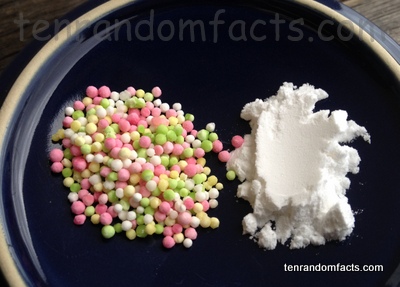Tapioca is a diverse substance.
- Tapioca is a starch taken from the root of the plant with the scientific name, Manihot esculenta, that is commonly known as cassava.
- The cassava or manioc tuber, as it is sometimes called, that tapioca is derived from, is native to South America, and was eventually taken to Africa and Asia as a result of explorers from Portugal and Spain.
- Tapioca can be bought as powder, flakes, pearls, sticks and meal, and the latter four often require soaking before use.
- Tapioca is often made into desserts; is used as a thickener in liquids; and can be used as a flour in baked goods.
- The roots of cassava are poisonous and contain cyanide until they are thoroughly processed, after which the tapioca is extracted.
- Tapioca was a staple food item during the food shortages in Southeast Asia during World War II.
- The word ‘tapioca’ comes from the native Tupí language term for the method of making the cassava root fit for consumption, known as ‘tipi’óka’.
- Tapioca is commonly used in gluten free cooking, and it helps to give a crispy or chewy feel to baked goods, depending on the item.
- Tapioca is high in iron and manganese and is very high in carbohydrates.
- Tapioca is typically white in colour, but very rarely does it affect the colour of other food, and it generally does not provide flavour, although too much of the starch in a food item can cause an unpleasant or slimy texture, as well as taste.
Bibliography:
Tapioca, 2014, Wikipedia, http://en.wikipedia.org/wiki/Tapioca
Tapioca Flour, 2014, Bob’s Red Mill, http://www.bobsredmill.com/tapioca-flour.html
WHAT IS TAPIOCA STARCH AND TAPIOCA FLOUR? {GLUTEN FREE FOOD FACTS}, 2012, Lynn’s Kitchen Adventures, http://www.lynnskitchenadventures.com/2012/10/what-is-tapioca-starch-and-tapioca-flour-gluten-free-food-facts.html






